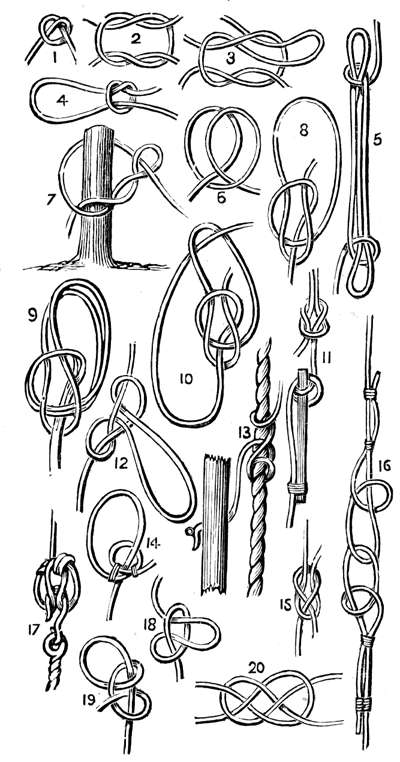Knots
From CruisersWiki
(Difference between revisions)
Lighthouse (Talk | contribs) |
|||
| Line 1: | Line 1: | ||
| + | ==Knots== | ||
In '''Seamanship''' , knots are in everyday day use. Learn to tie the Bowline with one hand, the running hitch to free a line jammed on a winch "overwind" , the sheet bend to tie the sheet to the head sail clew, the clove hitch to tie horse outside the saloon's hitching post. | In '''Seamanship''' , knots are in everyday day use. Learn to tie the Bowline with one hand, the running hitch to free a line jammed on a winch "overwind" , the sheet bend to tie the sheet to the head sail clew, the clove hitch to tie horse outside the saloon's hitching post. | ||
| Line 23: | Line 24: | ||
# Half-hitch, cast on the bight of a rope. | # Half-hitch, cast on the bight of a rope. | ||
# Carrick bend. A wall-knot is a knot made at the end of a rope to prevent it from passing through a hole. | # Carrick bend. A wall-knot is a knot made at the end of a rope to prevent it from passing through a hole. | ||
| + | |||
| + | ===References=== | ||
| + | Books, etc. | ||
| + | * | ||
| + | * | ||
| + | |||
| + | ===Forum Discussions=== | ||
| + | Links to discussion threads on the CruiserLog Wiki | ||
| + | * | ||
| + | * | ||
| + | |||
| + | ===External Links=== | ||
| + | * | ||
| + | * | ||
| + | * | ||
Revision as of 07:29, 28 November 2007
Contents |
Knots
In Seamanship , knots are in everyday day use. Learn to tie the Bowline with one hand, the running hitch to free a line jammed on a winch "overwind" , the sheet bend to tie the sheet to the head sail clew, the clove hitch to tie horse outside the saloon's hitching post.
- Thumb or over-hand knot, tied at the end of a rope to prevent it from opening out, &c.
- Right or reef-knot, for securing all lashings where the ends of the rope meet together.
- Draw-knot, which offers great facility in undoing.
- Running-knot, used to bind or draw anything close.
- Sheepshank, serving to shorten a rope without cutting it or unfastening the ends.
- Clove-hitch, which binds with excessive force, and by which alone a weight can be hung to a smooth pole.
- Timber-hitch, very useful in hauling to move a weight.
- Single bowline-knot, easy to undo, useful to throw over a post &c., to haul on, used for the draw-loop of a slip noose.
- Double bowline-knot, for slinging a cask.
- Running bowline-knot.
- Woolding or packing-stick hitch, used to tighten ropes.
- Men's harness hitch, passing over the shoulder and under the opposite arm of men drawing a carriage, &c.
- Stopper hitch, for stoppering the fall of a tackle, &c.
- Inside clinch, for fastening a cable to the anchor ring, &c.
- Common or sheet bend, a very secure method of joining two ropes, or fastening a rope to a loop.
- Hawser bend, for joining two ropes, easily undone.
- Cat's paw, the turn in the bight of a rope, for hooking a tackle to it.
- Dragrope or lever-hitch, used for fixing hand-spikes or capstanbars to the ropes attached to heavy carriages, &c., which have to be moved by men.
- Half-hitch, cast on the bight of a rope.
- Carrick bend. A wall-knot is a knot made at the end of a rope to prevent it from passing through a hole.
References
Books, etc.
Forum Discussions
Links to discussion threads on the CruiserLog Wiki
